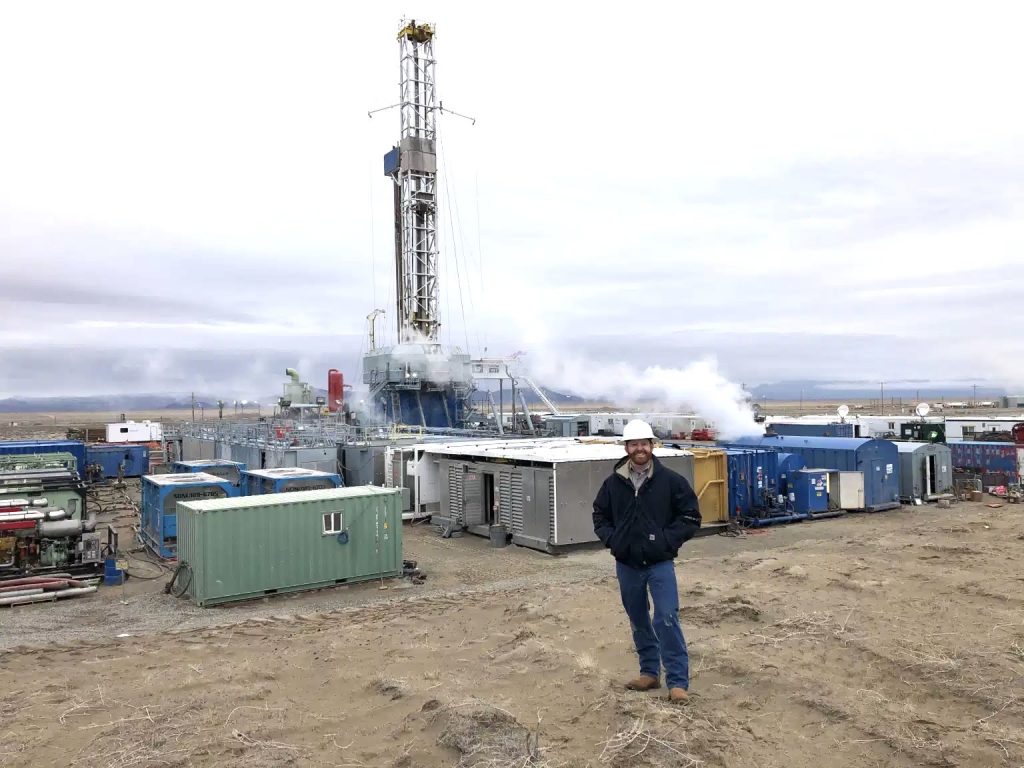$11 million in DOE funding for geothermal technologies announced
Two companies and two universities have secured funding under the U.S. DOE's Arpa-E program with $4.5m going to Fervo Energy, $3.7m to Eden GeoPower and around $2.7m in funding for research by two schools in Texas.
The U.S. Department of Energy (DOE) has announced $175 million for 68 research and development projects aimed at developing disruptive technologies to strengthen the the U.S.’ advanced energy enterprise. Led by DOE’s Advanced Research Projects Agency-Energy (ARPA-E), the OPEN 2021 program prioritizes funding high-impact, high-risk technologies that support novel approaches to clean energy challenges. The selected projects — spanning 22 states and coordinated at universities, national laboratories, and private companies — will advance technologies for a wide range of areas, including electric vehicles, offshore wind, storage and nuclear recycling.
Four projects are directly or indirectly tied to geothermal, with around $11 million in funding granted.
Fervo Energy – Houston, TX
FervoFlexTM: Long duration In-reservoir Energy Storage and Load-Following, Dispatchable Geothermal Generation – $4,500,000
Fervo Energy will demonstrate its proprietary field-scalable next-generation geothermal and long-duration storage technology, FervoFlexTM. The FervoFlexTM technology effectively enables Fervo to operate their assets to achieve multi-day energy storage attributes in addition to the traditional benefits of clean, firm geothermal power. Fervo’s horizontal well design connects subsurface wells with a set of hydraulically conductive fractures surrounded by impermeable rock. These fractures act as flow pathways, providing contact areas with the geothermal reservoir to enable sustained heat recovery, and the low-permeability rock prevents fluid leakoff. Charging and discharging cycles are performed by controlling the injection and production well flow rates and pressures to deliver flexible generation profiles in response to grid demands and time-shift energy at high round-trip efficiencies. The team will develop a fiber optics-based diagnostic platform to monitor and optimize dynamic subsurface processes that currently pose major barriers to flexibly operating geothermal facilities.
Eden GeoPower – Somerville, MA
Electro-Hydraulic Fracturing for Enhanced Geothermal Systems – $3,796,672
To improve Enhanced Geothermal Systems’ (EGS) power generation efficiency, Eden GeoPower proposes “Electro-Hydraulic Fracturing” (E-HF), which uses high-voltage electricity and low-volume water injection to access a larger fracture network for heat recovery. The method consists of a new electromagnetic approach to enable monitoring and imaging existing fractures and the ability to create additional fractures in a highly targeted matter through the application of electrical current. This E-HF process will increase the heat transfer surface area, improving efficiency of EGS power plants by up to 500%. This technology can potentially save 270 billion gallons of water by limiting water use compared with traditional hydraulic fracturing and would provide access to untapped renewable geothermal energy.
The next two companies to receive funding are only related indirectly as one of the applications for the technology being developed can be geothermal but also others.
University of Houston – Houston, TX
Miniaturized Pulsed Power Systems for Mission Critical Applications (Mini-PulPS) – $965,028
The University of Houston will develop gallium nitride-based Miniaturized Pulsed Power System (or Mini-PulPS) architectures to improve the power density (10x reduction in capacitor size) and life of converters (>1000 hours of operation above 175oC) used in pulsed power supplies. The project will also build a battery-operated handheld nuclear magnetic resonance device for lab use or to perform mobile magnetic resonance imaging (MRI) measurements. The University of Houston’s new technologies will improve the power converter system efficiency and reliability across pulsed power applications, as well as reduce the risks of equipment or formation failures. The miniaturized size of the system will also disruptively reduce the cost of downhole welllogging tools used in fossil and geothermal energy applications for the characterization of sub-surface formations and fluids. The technology will also lead to transformational healthcare applications of MRI in the near term.
Texas Tech University – Lubbock, TX
Semiconductor Neutron Detectors – $1,789,998
Based on Texas Tech University’s recent development of hexagonal boron nitride (BN) semiconductor thermal neutron detectors with a record efficiency of 59%, Texas Tech will develop BN fast neutron detectors (FND) for energies up to tens of mega-electron volts. BN FND present unique advantages, including compact size, high gamma rejection ratio, low voltage operation, and low fabrication and maintenance costs. These neutron detectors can operate in high temperatures and harsh environments and detect thermal and fast neutrons simultaneously. The BN FND could be installed on the perimeter or in the core of a nuclear reactor to directly monitor reactor and fuel status. The technology also has the potential to replace the multiple Helium-3 gas tube-based neutron detectors currently deployed in geothermal and well logging tools. The BN FND’s unprecedented performance at a reduced cost could also create new applications in nuclear energy, national security, nuclear waste monitoring and management, the health care industry, and material sciences.
Source: DOE


















